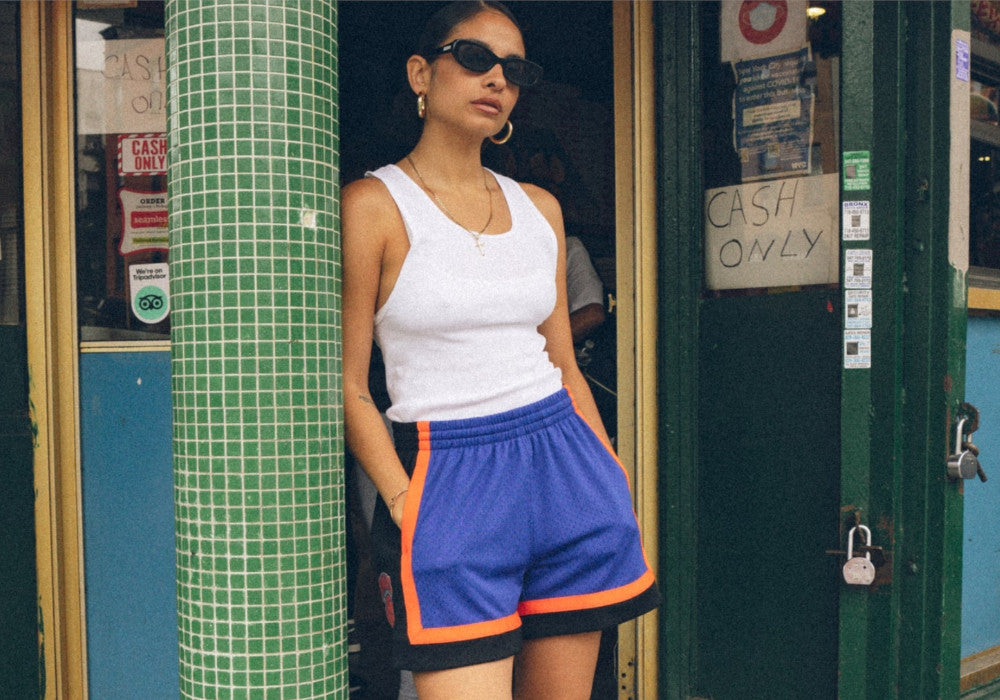
Mitchell & Ness is an American fashion retailer founded in 1904 and headquartered in Philadelphia, Pennsylvania. The clothing company creates sports apparel for men, women, and children.
The fashion group Fanatics, Inc. owns Mitchell & Ness and other brands, including Topps, WinCraft, Top of the World, Majestic, FansEdge, and more. It has approximately 18,000 employees in 15 countries with more than 80 offices and facilities across the globe.
Mitchell & Ness is committed to harnessing its reach to make a positive impact on the world. It takes responsibility for driving the industry toward more ethical and sustainable practices.
Panaprium is independent and reader supported. If you buy something through our link, we may earn a commission. If you can, please support us on a monthly basis. It takes less than a minute to set up, and you will be making a big impact every single month. Thank you!
Sustainability Rating: 4/10
Rating FAQ
Category: Clothing, accessories, bags, shoes
For: Women, men, children
Type: Basics, knitwear, activewear, loungewear, outerwear, sneakers
Style: Casual
Quality: Medium
Prices: $$
Sizes: XS-4XL, 2-16 (US), 4-18 (UK), 34-46 (EU), 4-18 (AU), plus
Fabrics: Cotton, linen, hemp, jute, lyocell, modal, viscose, acetate, polyester, nylon, spandex, polyethylene, polypropylene, acrylic, neoprene, polyurethane, rubber, leather, wool
100% Organic: No
100% Vegan: No
Ethical & Fair: No
Recycling: Yes
Producing countries: Bangladesh, Cambodia, Canada, China, Egypt, El Salvador, Guatemala, Honduras, Indonesia, Jordan, Malaysia, Mexico, Nicaragua, Pakistan, Sri Lanka, Thailand, United States, Vietnam
Certifications: BCI, FSC
Sustainability Practices
Mitchell & Ness takes wide-ranging measures to protect biodiversity, reduce its consumption of water, energy, and other resources, avoid waste, and combat climate change.
It wants to be better and more efficient by looking at every aspect of its value chain to ensure the healthy functioning of our planet. However, the majority of its business remains detrimental to the environment.
Mitchell & Ness only uses a tiny proportion of organic materials such as organic cotton and hemp, or recycled materials such as recycled polyester.
Most of the fabrics it uses are either natural without relevant certifications, such as regular cotton or linen, or synthetic petroleum-based fibers such as polyester, nylon, acrylic, and more.
Mitchell & Ness also uses a small proportion of semi-synthetic fibers or regenerated cellulosic fabrics such as Tencel lyocell, modal, acetate, and viscose.
Tencel is an eco-friendly fiber made with wood pulp from certified sustainable forests. But only a tiny proportion of the materials used by Mitchell & Ness are environmentally friendly and sustainable.
Mitchell & Ness publishes a list of all its manufacturers on its corporate website. It aims to ensure that workers throughout the supply chain are treated fairly and respectfully and without discrimination.
Mitchell & Ness manufactures its clothes in many other East Asian countries, where human rights and labor law violations happen every day.
The American clothing retailer doesn't show any labor certification standard that would ensure good working conditions, decent living wages, health, safety, and other crucial rights for workers in its supply chain.
Mitchell & Ness has a code of conduct that applies to all its suppliers and subcontractors based on the regulations set by the International Labor Organization (ILO).
Mitchell & Ness doesn't reveal if it assesses compliance with its Code of Conduct through third-party audits without notice. But it works with international organizations to improve the working conditions in its factories.
Mitchell & Ness doesn't use exotic animal skin, hair, fur, or angora. But it uses leather and wool to manufacture many of its clothing pieces.
These animal-derived materials are cruel and unethical. They also harm the environment by producing greenhouse gases and waste. More sustainable alternatives exist.
Sustainability Goals
Mitchell & Ness has committed to being 100% zero waste to landfill by 2030 in its existing U.S. facilities, making it one of the global leaders on this front. In 2020, Mitchell & Ness made a significant reduction in its carbon footprint.
It doesn't have any other clear sustainability goals, science-based targets, or timelines to improve in the future.
Buy Here
Discover Mitchell & Ness' collections at MitchellAndNess.com.
Reviews And Experiences With Mitchell & Ness
Have you had (good) experiences with shopping at or the products of Mitchell & Ness? Then leave us your rating below.
What We're Up Against
Multinational corporations overproducing cheap products in the poorest countries.
Huge factories with sweatshop-like conditions underpaying workers.
Media conglomerates promoting unethical, unsustainable products.
Bad actors encouraging overconsumption through oblivious behavior.
- - - -
Thankfully, we've got our supporters, including you.
Panaprium is funded by readers like you who want to join us in our mission to make the world entirely sustainable.
If you can, please support us on a monthly basis. It takes less than a minute to set up, and you will be making a big impact every single month. Thank you.

































0 comments